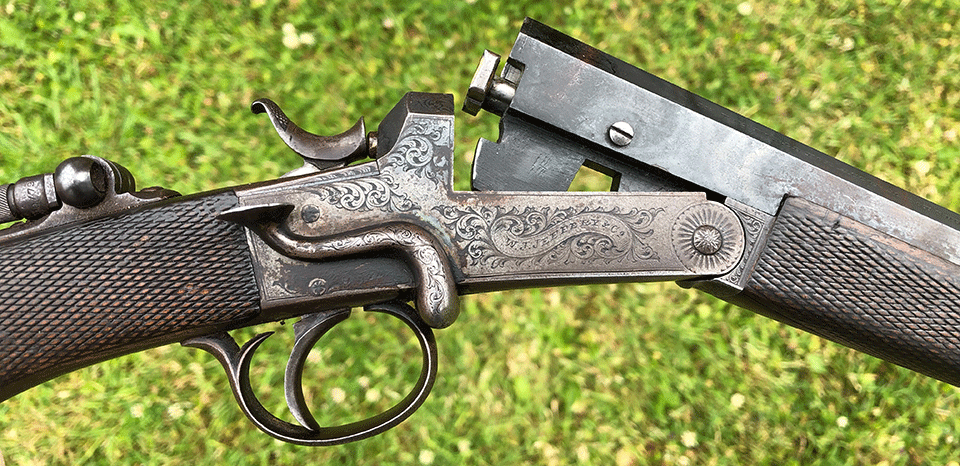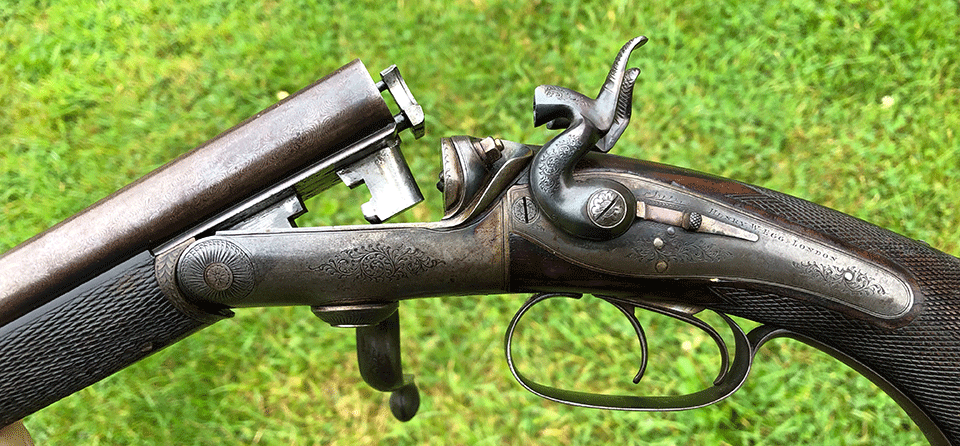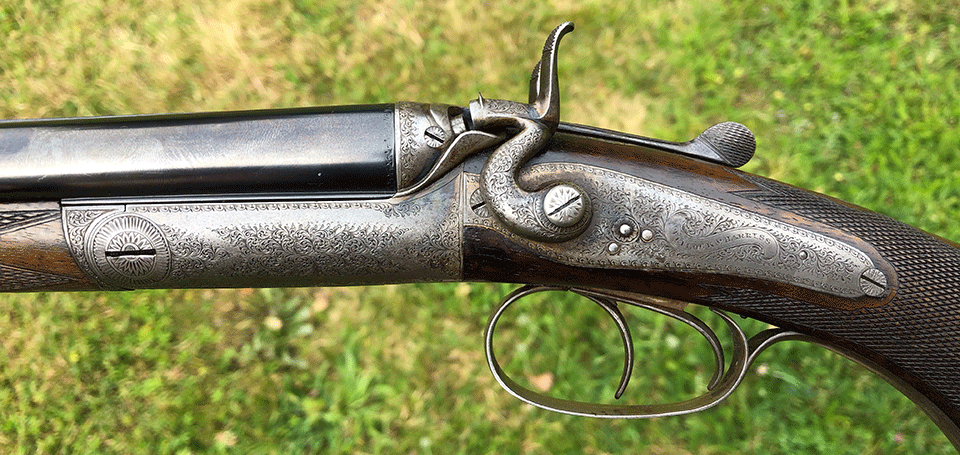What did people do when they found their rifles no longer had any useful application, or when ammunition was no longer available? Many converted them to shotguns.
The phenomenon is one which was observed mostly in the years between World War Two and the late 1960s.. The Victorians and Edwardians had enjoyed a huge variety of available calibres and chamberings for both black powder and nitro cartridges.
The Age of Invention, which flourished between the dawn of the breech-loader in the 1850s and the First World War, saw many firms creating rifles and ammunition they hoped would make their fortunes, or at least add to their coffers. Some were very successful, other moderately so. As long as the firm that invented and promoted a particular style of rifle or ammunition prospered, the combination was likely to be available.
However, when the fortunes of British gunmakers waned in the mid twentieth century, many of these rounds were discontinued and became obsolete. Anyone with an expensive rifle, be it single or double, found himself with a sporting arm that could no longer be kept in ammunition.
There were few choices: hang them on the wall as decorations, convert them to a different chambering (which is not always possible and requires expensive re-regulation), or remove the rifling and convert them to shotguns. Since the last of those options was the easiest and cheapest to effect, it was the most frequently undertaken.
We can examine three examples of Victorian rifles subjected to this alteration. The first is a double hammer rifle, the second a single rook rifle and the third a heavy 12-bore ‘shot & ball’ gun that once had rifled chokes.
The first example is a rook rifle by W.J. Jeffery. The octagonal barrel announces ‘Jeffery Rifles hold the highest record in the world for accuracy of shooting’. Its three leaf sights and additional peep sight attest to its heritage as a precision tool for dispatching small game. It was probably a .320 Rook when made.
It was first converted to .22 rimfire by Parker-rifling and would have been a great little .22 but the last owner wanted to get it off his FAC. So, he had it converted to .410 shotgun, with 65mm chambers. It doesn’t really suit being a shotgun, though it is useful enough in the garden for knocking over squirrels and rabbits, when they are siting still. It feels and looks very much like a rifle, with its sights and heavy 26 1/2” barrel.
What it does have is quality. The neat central-hammer action with side-lever is nicely scroll engraved and retains a good patina. The flat-top chequer is original and the 14 1/2” stock nicely-shaped and well-figured. Converting rifles like this made them useful farm tools for vermin control and many have survived. It was common practice to lighten the barrels by turning them on a lathe. I have a Charles Osbourne of a similar type to the Jeffery that has been done this way. On today’s market they make modest money but the style and quality of these little rook rifles make them fun to own and use.
The next relic we have to examine was probably a .360 BPE. It is a back-action hammer gun by Henry W. Egg and is of lovely quality, with a deeply coloured, fiddle-back stock and bolted hammers to its non-rebound locks. It probably dates from the mid 1870s. The Jones under-lever operates the open/close mechanism and it has heavy Damascus barrels, from which the leaf sights have been removed, but on which the blade foresight remains.
One hammer has been damaged, with the spur bent and torn. A simple repair for a good finisher, with the help of a good welder. The conversion is to 2 1/2” .410, though, with the weight it carries, it could handle 3” shells comfortably. The heavy barrels of these double rifles, I find, are of benefit when swinging onto a moving target.
I find genuine .410s too light. They are fast to move, fast to stop and I tend to ‘poke’ with them. The weight in this Egg makes for a smoother swing, if you don’t mind a seven pound .410! I won the British Side-by-Side Championship in the my class a few years ago with a very similar rifle converted to 28-bore.
Our final conversion is the big boy of the bunch. It is a boxlock by Andrews, probably made by the Midland Gun Co. It was once a rifled choke double ‘shot & ball gun’ of the type popularised by the Holland & Holland ‘Paradox’ and many of its off-shoots, like the Westley Richards ‘Explora’ and the Army & Navy ‘Jungle Gun’. These were useful if you were in an outpost of Empire and needed a utility gun/rifle to serve all purposes from pot-shooting guinea fowl to dealing with a marauding tiger. Like many of these weapons, once back in England, with no prospect of tiger on the menu, the Andrews, like many others, had the rifling removed and became a heavy shotgun.
It retains its leaf sights and, with pistol-grip and sold construction, feels like it can handle heavy loads. My instructions for this are to test it with a variety of solid slugs to see what the accuracy is like at fifty yards. Might it perform with Brennekes or something similar and become a pig-killer in forest drives? That is a story for another day. It may even be possible to retro-fit rifled chokes, but I fear the cost would be too great and the results too uncertain.
I’m often asked if these conversions can be put back to their original configuration or made into appropriate modern calibre rifles. The answer is, out of economic necessity, a flat “No”. Re-barrelling, with the necessary regulation is cost prohibitive and (the once common) Parker-rifling, in which a rifled tube is welded into the honed-out bore to make it into a small calibre rifle, like .22 rimfire, or .22 Hornet is no longer easy to get done. A classic example of lack of supply of parts; a problem that plagues the gun trade.
One option to explore would be home-loading shotgun slugs for the, now smooth-bore, .410s and see if any degree of accuracy would be forthcoming. That is certainly an avenue an American enthusiast would follow, but here in the UK, I very much doubt you would get to put .410 smooth-bore, with Section 1 slug ammunition, listed for any live quarry on your FAC.
These oddities do still swirl around on the periphery of the trade, not really having a natural home but appealing to the romantic who finds their quality and their place in history still has an allure. I, for one, will be having some fun exploring possibilities for the three guns described here. They were purchased for a combined figure of about six hundred pounds.
Published by Vintage Guns Ltd on (modified )




